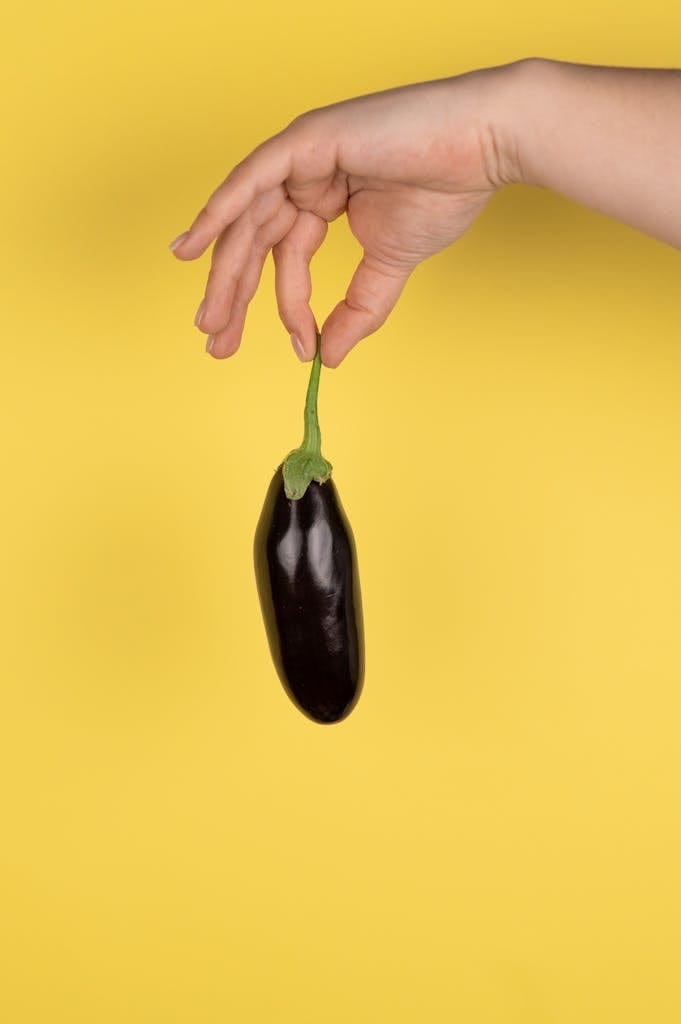How to Ripen Strawberries Quickly: Instant Fruit Ripening Techniques
Greetings to all Plant Lovers! Isn’t it exciting to witness your strawberries mature to their utmost excellence? Your sentiment is unquestionably shared by me. We’ve all been familiar with that anticipation, keenly waiting to relish the fruits of our rigorous efforts and fervor.
Today, I will unravel the mystery of how to ripen strawberries quickly. It might seem tricky, but with a few proven techniques, you’ll have juicy, ripe, and edible strawberries in no time.
We’ll discuss ripening processes, storage methods, and how to get the most out of your ripe and edible strawberries. Let’s also troubleshoot some common problems. So, let’s dive in and turn those green berries into red delights.
Key Takeaways
- Ethylene gas plays a pivotal role in the ripening process of strawberries.
- Storing strawberries with fruits that emit ethylene gas, like apples or bananas, can accelerate the ripening cycle.
- Ripe strawberries can be identified by their aroma, color, and texture.
- Utilizing a warm environment or placing unripe strawberries in a paper bag with a ripe banana can hasten the ripening cycle.
Understanding the Strawberry Ripening Process
I’ve always been fascinated by how strawberries continue to ripen after they’ve been picked. The Ethylene plant hormone or gas plays a pivotal role in this process. They’re ripe by their inviting aroma, vibrant color, and soft texture.
How Strawberries Ripen After Harvest?
In my experience, a strawberry’s ripening cycle doesn’t stop after it’s been harvested. Contrary to common belief, strawberries do ripen after they’re picked.
Let me share three simple steps to trigger the ripening cycle of the strawberries:
- Warm Environment: Place the harvested strawberries in a warm room. It ripens quickly in warm temperatures.
- Use of Ethylene Gas: Store the strawberries with fruits that emit the gas, like apples or bananas. It fast-tracks the ripening cycle.
- Brown Paper Bag Method: Enclose the strawberries in a brown parchment bag. This traps the gas, causing the harvested strawberries to ripen faster.
With these steps, you’ll master the art of ripening strawberries after they’ve been harvested.
The role of ethylene gas in ripening strawberries
I’m fascinated by how this natural plant hormone gas plays a crucial role in ripening strawberries and is also used in commercial fruit production.
This gas is an essential agent to ripen strawberries, acting as a catalyst to speed up the ripening cycle. It’s a marvel how this seemingly insignificant molecule can greatly influence the ripening of strawberries, triggering a cascade of biochemical reactions that result in that sweet, juicy berry we love.
In commercial settings, ethylene plant hormone is often used to ensure uniform ripening, ensuring all berries in a batch are ripe and ready simultaneously. It’s an intricate and vital process where science and nature blend perfectly, demonstrating the complexity behind the simple act of ripening a strawberry.
Indicators of ripe strawberries: smell, color, texture
It’s easy to tell when strawberries are ripe by their sweet smell, bright red color, and soft texture. These indicators of ripe and edible strawberries are consistent and reliable. I’ve found that understanding these basic sensory cues enhances my ability to select perfectly ripe strawberries.
Here are the three key indicators to look out for:
- Smell: Ripe and edible strawberries have a sweet, fragrant aroma. If it’s missing, they’re probably not ripe.
- Color: Strawberries are bright red when ripe. Unripened ones have a pinkish hue or white patches.
- Texture: Ripe, plump strawberries are firm but yielding to light pressure. The overripe ones are mushy.
Proven Methods to Ripen Strawberries at Home
I’ve found a few tried and tested ways to ripen strawberries right at home.
- One is using the paper bag trick with a ripe banana.
- Another is leveraging a warm environment to speed up the ripening cycle.
If you’ve got hard strawberries, don’t worry; I’ll show you how a wooden spoon and a plastic bag can soften them up.
Using the paper bag method with a ripe banana
In my experience, placing unripened strawberries in a paper or parchment bag with ripe bananas speeds up the ripening cycle significantly due to the release of ethylene gas from the banana. It is a natural plant hormone emitted by the banana that encourages the strawberries to ripen faster.
To master this way to ripen strawberries faster, follow these steps:
- Put your strawberries in a paper or parchment bag. Make sure it’s large enough to not squash the fruit.
- Add a ripe yellow banana to the bag. The riper, the better, as it’ll release more ethylene plant hormone or gas.
- Seal the bag and let it sit at room temperature.
Utilizing a warm environment for developing strawberries
While I’ve found the paper bag method to be effective, I’ve also discovered that they ripen more quickly when they’re kept in a warm environment, as the heat accelerates the ripening flow.
Utilizing a warm environment for ripening is quite simple. We’re not talking about baking them, of course, just keeping them cozy. I’ve found that leaving strawberries at room temperature in a well-insulated area can do wonders. This technique can be especially useful if you need to ripen strawberries quickly for a recipe or a spontaneous dessert.
Remember, time and warmth are your friends here. You’ll be surprised at how a warm, cozy spot can accelerate the ripening cycle. Give it a try. Enjoy those juicy, plump, and sweeter strawberries sooner than you thought possible.
How to soften hard strawberries with a wooden spoon and plastic bag
I’m going to tackle using a wooden spoon and plastic bag to soften hard strawberries, and it’s an easy process you can accomplish at home. I’ll show you how to ripen and cultivate strawberries at your place, transforming them from hard to beautifully soft.
- Secure your strawberries in a plastic bag. The bag’s environment encourages the strawberries to ripen by trapping ethylene gas, a natural byproduct of fruit that accelerates ripening.
- Gently press on each strawberry with the back of a wooden spoon. This helps to break up any hard areas, allowing the fruit to soften.
- Lastly, let the bag sit at room temperature for a day or two.
This method not only allows you to ripen your strawberries but also replaces the traditional paper or parchment bag method. Enjoy your softened strawberries!
Effective Ways to Store Strawberries for Optimal Ripening

I’ve found that the secret to optimal ripening lies in proper storage conditions. It’s key to understanding the best practices for storing and keeping strawberries at home. You’ll also need to know the telltale signs of spoilage to ensure you’re always eating them at their best.
The importance of proper storage conditions
Understanding the importance of proper storage conditions is crucial in achieving the best ripening results for strawberries. Here’s how I keep strawberries to ensure they ripen perfectly:
- Lay Them Out: It’s best to store and keep strawberries in a single layer. This prevents them from crushing each other and ensures even ripening.
- Cool Them Down: To store your strawberries effectively, place the strawberries in a cool, dry place. A refrigerator works best for this.
- Don’t Seal Them Up: Strawberries need air to ripen. Don’t store them in a sealed container.
Best practices for storing strawberries at home
Frequently, I find that storing strawberries in a well-ventilated container in the refrigerator ensures they stay fresh for longer. This is a simple yet effective method of keeping strawberries at home.
However, when it comes to ripening strawberries, you might need a different approach. The best way to ripen strawberries is to leave them out at room temperature, but make sure they’re spread out to prevent molding.
If you’re in a hurry, placing the strawberries in a paper or parchment bag with a ripe and edible banana or apple can speed up the process. These fruits release ethylene, a natural gas that accelerates ripening.
Mastering these methods to mellow strawberries can ensure you have fresh strawberries ready when you need them.
Tips to avoid symptoms of spoiled strawberries
To avoid running into the unpleasantness of spoiled strawberries, I’ve found that it’s essential to check them over for any signs of mold or mushiness before storing them. Here’s my personal guide to ensure you’re dealing with ripe strawberries:
- Examine your strawberries daily to ensure they’re in prime condition. Look out for any discoloration, wrinkles, or a sour smell – these are key symptoms of spoiled strawberries.
- Use tried and tested methods to ripen strawberries that aren’t quite ready. A warm environment speeds up the process, so consider leaving them on your countertop.
- Once they’re ripe, keep them refrigerated to maintain their freshness.
Getting The Most Out of Your Ripe Strawberries
Now that we’ve tackled the art of ripening and keeping strawberries, let’s shift our focus to making the most out of these ripe, juicy beauties.
I’m excited to share some of my favorite quick recipes, as well as resources for preserving these strawberries. We’ll also discuss how to properly incorporate ripe and edible strawberries in various drinks and desserts.
Quick recipes to make with ripe strawberries
Even though I’m not a professional chef, I’ve discovered some quick recipes that I can whip up with ripe and edible strawberries. When strawberries are perfectly ripe, their sweet flavor is unbeatable.
My favorite recipes include:
- Strawberry Smoothie: Blend strawberries with yogurt and a touch of honey. It’s a refreshing, healthy treat.
- Strawberry Jam: Combine edible strawberries, sugar, and lemon juice, then simmer. This homemade jam beats store-bought any day.
- Strawberry Shortcake: Layer biscuits, whipped cream, and sweet strawberries for a classic dessert.
These quick recipes to make with plump strawberries are proof that when strawberries are perfectly ripe, the culinary possibilities are endless.
Resources for preserving ripe strawberries
While I’ve found many ways to use ripe strawberries in recipes, I’m also researching resources for preserving them so they don’t go to waste. It’s a fascinating journey, given that strawberries are non-climacteric fruits, meaning they don’t continue to ripen after being harvested, a sample of these are berries. I’m focusing on how to preserve these harvested strawberries effectively.
Below, I’ve summarized two popular methods of preserving ripe and edible strawberries:
| Method | Description |
| Freezing | Wash, hull, and freeze strawberries on a baking sheet before transferring to a freezer bag. |
| Making Jam | Combine strawberries with sugar and lemon juice, then cook until it reaches a jammy consistency. |
I’m exploring these methods as I aim to enjoy strawberries daily, reducing waste and maximizing the value of each harvest.
Proper use of ripe strawberries in drinks and desserts
I’ve got five recipes that show the proper use of ripe strawberries in both drinks and desserts. The secret is ensuring your strawberries are ripe to ensure an optimal flavor profile.
- Strawberry Lemonade: This refreshing drink maximizes the use of ripe and edible strawberries, providing a sweet and tangy balance.
- Strawberry Shortcake: A classic dessert, the fully matured strawberries provide a natural sweetness that pairs well with the rich, buttery biscuit.
- Strawberry Basil Cocktail: A sophisticated drink that unexpectedly showcases ripe and edible strawberries paired with the herby freshness of basil.
Mastering these recipes will elevate your kitchen skills and impress your guests. Remember, the key is to use ripe and edible strawberries for maximum flavor. Enjoy the fruits of your labor and the sweet taste of success.
Can the Instant Fruit Ripening Techniques be Applied to Tomatoes as Well?
Can the instant fruit ripening techniques be applied to tomatoes as well? Tomato flower pollination guide is an essential tool for successful tomato cultivation. However, when it comes to ripening methods, tomatoes naturally require time as they go through a process of maturation. Instant fruit ripening techniques may not be effective in speeding up the ripening process of tomatoes.
Troubleshooting Common Strawberry Ripening Problems

I’ve faced a few challenges when trying to get my strawberries to ripen, and I’m sure I’m not alone. It’s not always easy to tell when strawberries are just right or when they’ve tipped into overripe. And there’s this persistent myth I want to address: does removing the stem really speed up the ripening cycle?
Why your strawberries might not be ripening?
Often, I find that my strawberries aren’t ripening properly due to insufficient sunlight. This is because strawberries are non-climacteric, meaning they don’t ripen after harvest.
Here are three factors that can affect the ripening cycle:
- Sunlight: Strawberry plants need a good amount of sunlight to ripen. If they’re in the shade, they’ll remain unripe.
- Temperature: Too cold or too hot can stunt the ripening cycle. Find a balance to keep your strawberries happy.
- Harvest time: Harvest too early or too late, and you’ll end up with unripe strawberries.
How to tell if strawberries are ripe or overripe?
In my experience, you can tell if strawberries are ripe when they’re bright red all over, while overripe ones become mushy and start to develop a dull color. The fully ripe fruit should be firm but not hard to the touch.
One trick to tell if your strawberries are ripe is by giving them a little sniff. A ripe and edible strawberry will have a sweet, fragrant aroma, while an overripe one will smell overly sweet, almost fermented.
Sometimes, the strawberries are ripe, yet their tops remain a bit green. Don’t be fooled – they’re still good to eat. The key is to trust your senses. If it looks appetizing, smells sweet, and feels firm, it’s ripe. If not, it’s likely overripe.
Myths debunked: Does removing the stem hasten the ripening process?
While it’s commonly believed that removing the stem hastens the ripening process, I’ve found that this isn’t always the case. This myth, among others, is often shared as a way to ripen strawberries faster. However, my investigation into the best methods for ripening strawberries has led to different conclusions.
- Heat: It’s the most efficient way to ripen picked strawberries. Warm environments facilitate the ripening process.
- Ethylene Gas: Strawberries produce this gas naturally. Keeping them in a closed bag will speed up ripening.
- Strawberry Companions: Pairing strawberries with ripe fruits like bananas can hasten their ripening.
Frequently Asked Questions
What Are the Nutritional Benefits of Eating Ripe Strawberries?
Ripe strawberries pack a nutritional punch! They’re loaded with antioxidants, high in vitamin C, and a great source of fiber. They also provide manganese and folate, which are beneficial for heart health and prenatal wellness.
Can I Freeze Strawberries to Preserve Their Ripeness?
You can definitely freeze strawberries to preserve their ripeness. I often do this myself. Just ensure they’re fully ripe before freezing. They won’t ripen further in the freezer, but they’ll keep their sweet flavor.
Is There Any Way to Ripen Strawberries Using a Microwave?
I’m sorry, but using a microwave to ripen strawberries isn’t recommended. It’s more likely to cook them than ripen them. It’s best to let them ripen naturally at room temperature.
How Can I Tell the Difference Between a Ripe and Overripe Strawberry?
I examined the strawberry’s color and texture. A ripe one’s bright red with a firm touch. If it’s dark red, soft, or has a mushy texture, it’s likely overripe. Trust your senses to tell.
Can Eating Unripe Strawberries Cause Any Health Issues?
Eating unripe strawberries won’t typically cause health issues. They’re just less sweet and more tart. However, if you’re sensitive to tannins, which are higher in unripened fruit, you might experience some stomach discomfort.
Conclusion
So, there you have it, folks! Now you know the ins and outs of ripening strawberries. With these methods, you can ensure your strawberries develop just right every time. And remember, storing them correctly is just as crucial. If you encounter any issues, refer back to our troubleshooting guide.
Enjoy your ripe, juicy strawberries, and don’t hesitate to experiment with different ways to savor them. Happy strawberry season, my friends!







